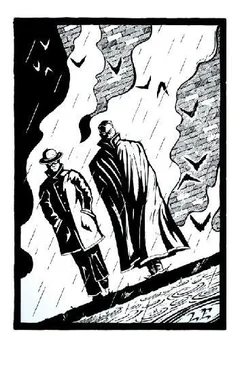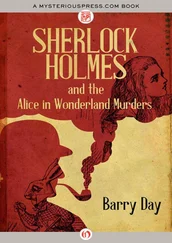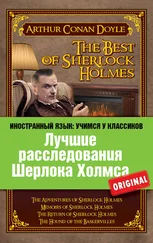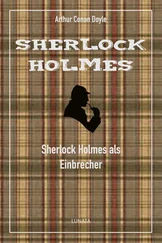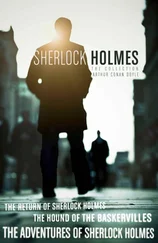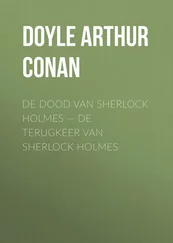It was signed, Gerard Jones, Chief Brewer .
“Examine the paper,” Holmes said. “There is something peculiar on the left edge near the bottom.”
I immediately saw what he meant. The edge seemed bevelled and on closer examination proved to have a greenish tinge.
“What is it Holmes? Some form of algal growth perhaps?”
“That is what I am trying to determine,” Holmes replied. “But so far I am having little success.”
He motioned me towards a jar that had been partially hidden behind the microscope.
“The sample mentioned within the letter is there. See what you make of it Watson.”
As soon as I picked up the jar I knew I had never seen anything like it before.
The jar held a pint of fluid but it did not look like anything resembling any fermentation of ale I had ever seen. As I held it up towards my face the contents shifted and the acrid odor grew so strong that I almost gagged as it caught at the back of my throat. The fluid was thick, almost solid, and a deep emerald green. It flowed, as if the whole thing were a single organism.
“It seems to have some of the properties of a slime mould,” Holmes said. “And it responds to external stimuli with a range of defensive adaptations.”
Holmes took the jar from me and placed it close to the paraffin burner. The green substance surged, piling up against the glass wall of the container.
“And this is in the vats in the brewery?”
Holmes nodded.
“It would appear so. Our task is to prove whether it has been introduced deliberately, or whether it is an accident of nature … of some kind.”
Holmes allowed me to study the sample he had mounted on the slide. There was no evidence of any cellular structure, or any differentiation in the material. Nothing existed to show that the thing was in any way alive. Yet it clearly moved. Even the small amount present on the slide pushed and surged against its confines with such violence that I stood back quickly in surprise. In doing so I knocked the bottom stage of the microscope, and swung the mirror away such that it no longer lit on the slide. I bent to rectify the problem but stopped as soon as I looked in the eyepiece.
Despite the lack of light I could still clearly see the sample. It glowed, giving forth a faint green luminescence. When I pointed this out to Holmes he at once drew the curtains and dimmed the lamps. It immediately became apparent that there was far more to our problem material than we realized.
The full expanse of Holmes’ desk glowed a sickly green, the miasma hanging in the air a full two feet or more above the surface. Holmes showed me his hands … they too shone dimly.
I frog-marched him downstairs and both of us scoured our hands with carbolic soap until no trace of green remained. When we went back upstairs the sight that met us made us pause in the doorway.
The curtains were still closed, however the darkness only accentuated the effect. The sample jar sat square in the middle of Holmes’ desk and the air seemed to dance, an aurora of light hovering in an almost perfect globe around it.
Armed with vinegar and salt I set to cleaning and disinfecting as much as I could see. Holmes could scarcely take his eyes from the jar and merely stood, contemplating the sheer strangeness of it, as I worked.
I was nearly finished in my task when a knock came downstairs. Holmes requested that I answer, and I went down, opening the door to Inspector Lestrade. He too was given pause by the sight of the jar on the desk, and might have been standing there yet, had Holmes not pressed him about his business. Even then he did not take his eyes from the jar.
“I understand you are commissioned on following up on the sabotage at the Fullers Brewery?”
Holmes refused to either confirm or deny this fact, as Lestrade continued.
“The saboteur has upped the ante,” he said. “We have a brewer in hospital and foul play is suspected … a poison as yet unidentified.” He was still staring at the desk. “I presume this came from Chiswick?”
As ever Holmes stayed quiet, but he did request that I accompany Lestrade to the hospital to talk to the stricken man.
Holmes motioned towards the jar.
“The study of this requires more rigor than I can provide here,” he said. “I shall remove this to the safety of a laboratory at the University and seek council from several Society Fellows. I shall meet you later in the Brewery.”
Lestrade was unusually quiet in the carriage on the way to the hospital, and would not speak of the condition of the victim.
“I would rather not prejudice your opinion Doctor,” was all he would say on the matter. I began to understand why when I was shown into a small room in the hospital. The corridor outside smelled strongly of carbolic soap, and I noted a strange reticence on the part of the staff to venture close to the doorway.
I walked inside to find a young man writhing on the bed, tearing at his throat.
I called for assistance and moved to his aid. A bloody dressing, a green smudge clearly visible, lay discarded on the bedcovers. The man’s head turned to look at me. The whole bottom half of his face was a bubbling mess of green-tinged gore.
Lestrade came quickly to my side and pinned the man’s arms, holding him down. Just the sight of us seemed to calm him somewhat, but he was obviously in great pain. His wounds seethed, the green slime seeming to feast on his flesh. I have seen many men die of disease and corruption in warmer climes, but nothing of this speed or destructive capability.
I had just bent to tend to the man when he screamed louder and his eye popped . Green-tinged fluid ran down his cheek and started to bubble at the join of neck and shoulder. The covers fell away from his chest and Lestrade moved aside, retching. Below the waist there was little left of the man, merely a rolling mess of green slime. The patient was past caring. He gripped my left hand tight and squeezed, just once, before the life went out of him completely.
I decided not to wait to see if the slime would continue progressing after the death of its host. I dragged a sickly-looking Lestrade from the room and called once more for assistance. This time it was forthcoming.
The poor man’s remains were quickly removed, and both Lestrade and I went with them to the incinerator, standing there for long minutes to ensure that the job was done properly. I also ensured that all who had been in contact with the patient, Lestrade and myself included, washed thoroughly with soap and hot water. I checked us both for any hint of the slime. Lestrade continued to look pale and sickly, even after I gave us the all clear.
“What in God’s name did that to the man?” he asked me. I’m afraid I did not have an answer for him. But I resolved there and then to find out. I would not stand to watch any more men die in such a fashion — not if I were able to do something about it.
I left Lestrade in the hospital to clear up the situation and headed for the brewery.
It was late evening by the time a cab deposited me outside the brewery. The sound of cheering and applause came faintly across the river from where Mrs. Hudson was no doubt enjoying the spectacle of gunplay and horsemanship. Standing there in the quiet dark I began to regret not bringing my own weapon on the trip.
There was no sign of Holmes, or indeed of anyone else. I knew that any large London brewery should be running an overnight operation, given the thirst of the population for their product. For the brewery to be sitting in darkness was an ominous sign. I considered waiting for Holmes, but all my thoughts were of that poor man’s pitiful death in the hospital room. I had a feeling that, if I wanted to stop further deaths, I would need to move quickly. This contagion had a manner that suggested it would spread rapidly. It was not as Holmes’ companion, but as a doctor, that I crossed the road to the brewery.
Читать дальше
